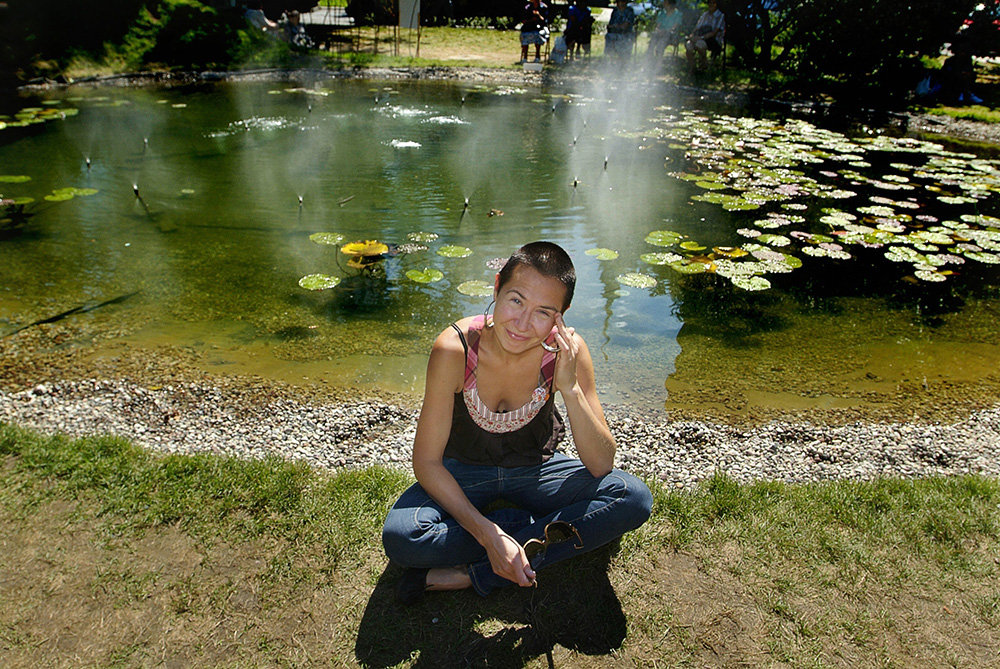Even though the duo’s work is probably the most formally interesting and exceptionally witty commentary on the time of transformation, it is lost in art history in place of the younger generation of critical artists, with some of whom Kijewski/Kocur make friends and collaborate, for example during Orońsko open-air event Bifurkacje, in 2007. In the same year, the duo’s cooperation comes to an end – Kijewski dies. A few years later, in 2015 their collaborative works are recalled during the Warsaw Gallery Weekend at Propaganda Gallery.
Joanna Rajkowska

Joanna Rajkowska in front of her ‘Dotleniacz’/The Oxygenator/, photo: Wojciech Druszcz/Reporter
Born in 1968, at the turn of 1980s and 1990s, Joanna Rajkowska, completes her studies in art history at the Jagiellonian University in Kraków. Almost at the same time, she graduates with a master’s degree in painting at the Academy of Fine Arts in Kraków. However, her art has little in common with the art of Jerzy Nowosielski, her teacher. In the 1990s, Rajkowska sculpts hybrid figures in epoxy resin. She uses a cast of her own body, as well as casts of dead animals. She treats the body as a sculpture. In 2000, this relation is taken to a totally new level. She creates a compelling fiction: soaps, perfumes and drinks allegedly based on her own body ('Satisfaction guaranteed'). The artist produces them on an industrial scale and for the first time attracts considerable attention. She puts intimate photos on the packaging. She also promises that her products will have incredible effects.
However, the central place in Rajkowska’s artistic output is occupied by her projects in public space. The first and best-known is the famous palm tree at the Rondo de Gaulle’a (Charles de Gaulle roundabout) in Warsaw – Pozdrowienia z Alej Jerozolimskich/Greetings from the Jerusalem Avenue. The artificial date palm, associated with the avenue’s name, was created after the artist’s visit to Israel. The palm calls to mind the void left by the once large Warsaw Jewish community, whose past existence is reflected today mainly in the names, almost void and functioning out of their original context. The installation was to stand at the Charles de Gaulle roundabout for one year. However, it was left there for good, becoming one of the symbols of the city. The palm attracts not only TV cameras and tourists who take pictures in front of it, including a selfie which is a must, but it also provokes others to act. In 2016, for example, a young artist, Renata Motyka, in her Take Care video performance, was running to the artificial palm tree and watering it.
Water is central in another of Rajkowska’s projects placed in the public spaces of Warsaw, entitled Dotleniacz/The Oxygenator, that attracted much attention. At the Plac Grzybowski [Grzybowski Square], the artist arranged a pond with a special ozonating device, placed underwater. The device created fog over the pond. Special chairs were placed around the pond so that people could sit and spend time together. However, unlike the Greetings from the Jerusalem Avenue, the Oxygenator, though enthusiastically welcomed by Varsovians, did not stay long.